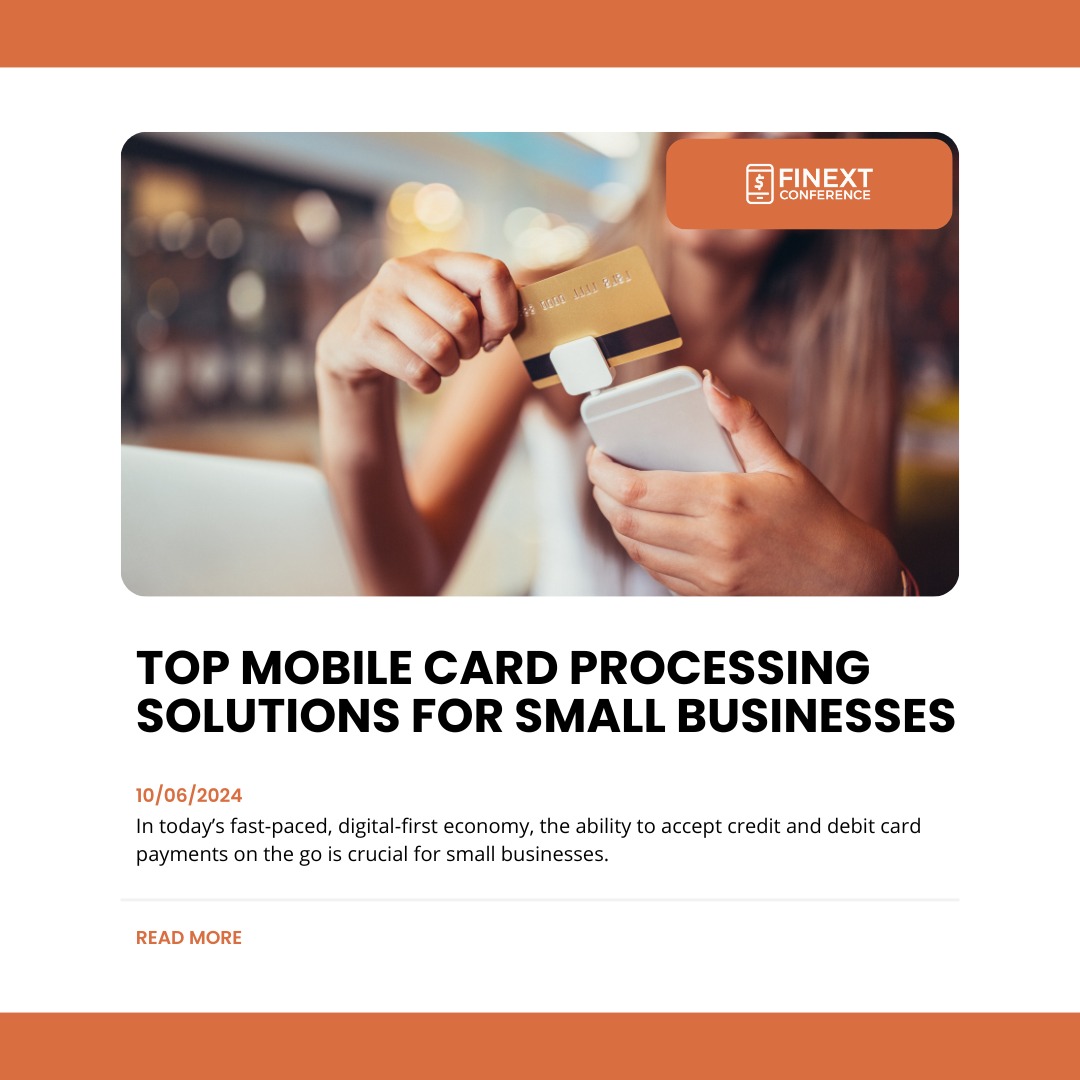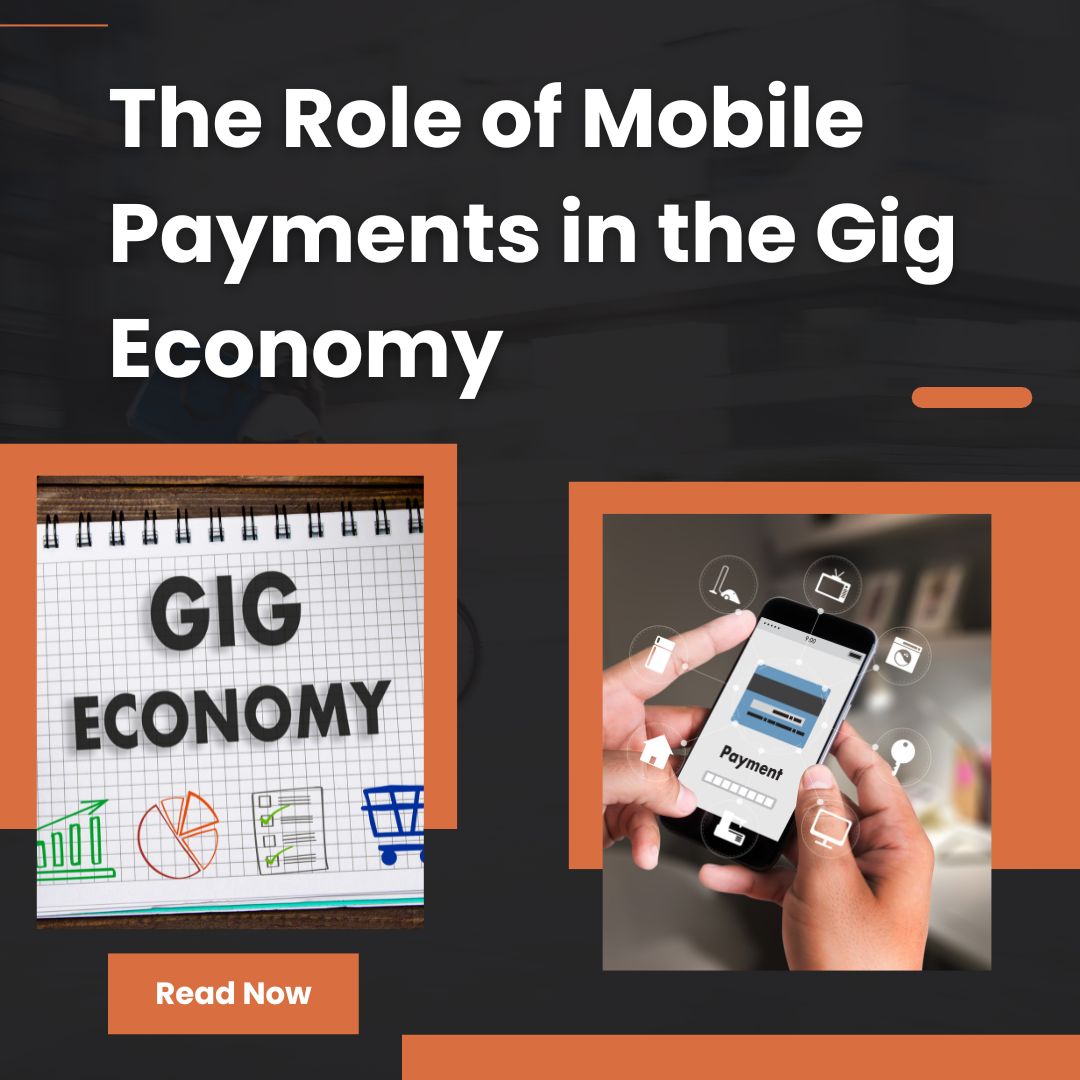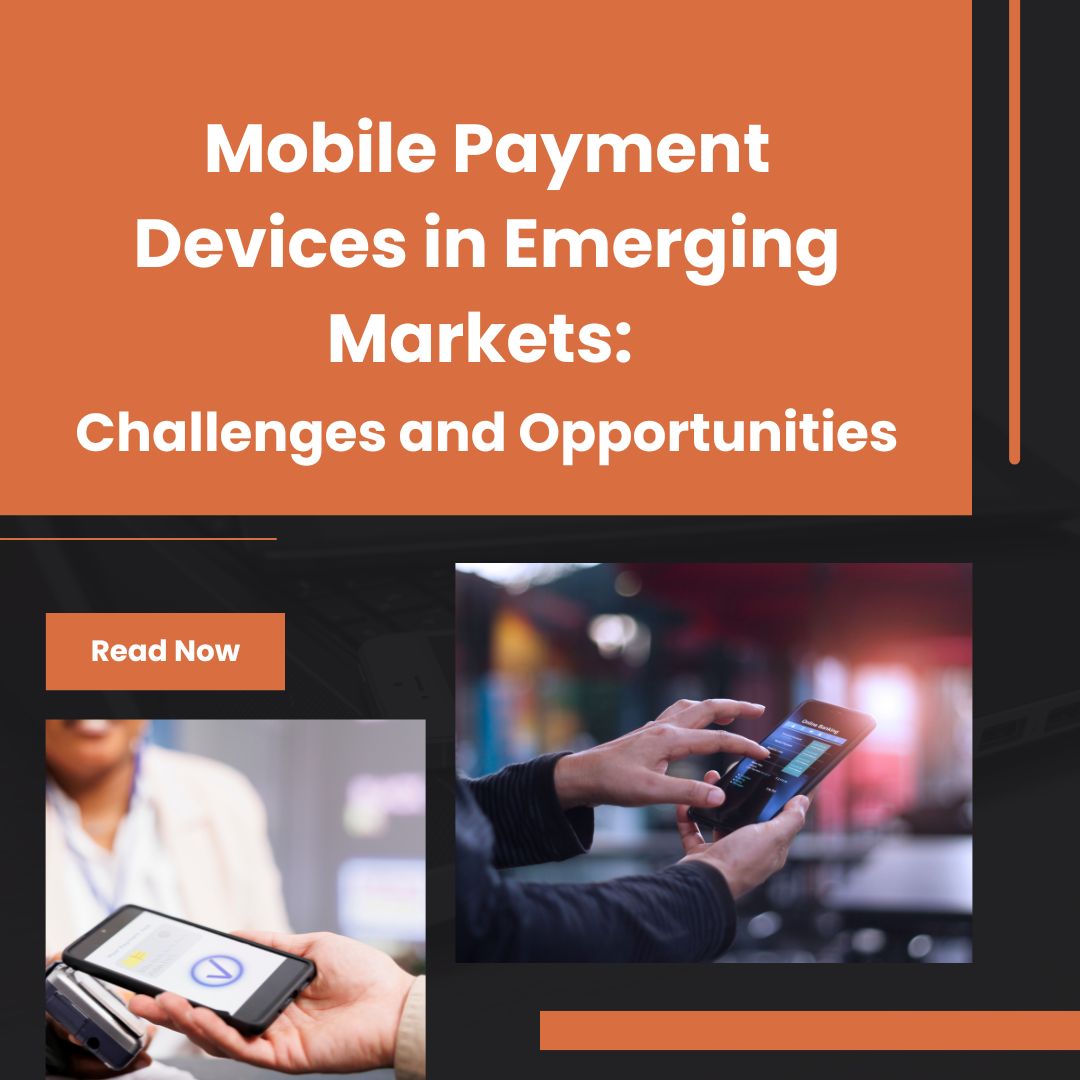Mobile payment technology has seen remarkable growth over the past decade, transforming the way we conduct financial transactions. As we look to the future, several trends are poised to reshape the landscape of mobile payments, making them more secure, convenient, and accessible than ever before. Here are some key trends to watch out for in the coming years. 1. Biometric Authentication Security is a paramount concern for mobile payments. Biometric authentication, such as fingerprint scanning, facial recognition, and even iris scanning, is becoming increasingly popular. These methods offer enhanced security compared to traditional PINs or passwords, reducing the risk of fraud and unauthorized access. As biometric technology becomes more advanced and widely adopted, we can expect it to become a standard feature in mobile payment systems. 2. Blockchain and Cryptocurrency Integration Blockchain technology offers a decentralized and secure way to process transactions. Cryptocurrencies like Bitcoin and Ethereum are gaining traction as viable alternatives to traditional currency. Integrating blockchain with mobile payment systems can provide faster, cheaper, and more secure transactions. Moreover, it can enable cross-border payments without the need for intermediaries, thus reducing costs and transaction times. 3. Contactless Payments and NFC Technology The COVID-19 pandemic accelerated the adoption of contactless payment methods, and this trend is here to stay. Near Field Communication (NFC) technology, which allows devices to communicate when in close proximity, is at the heart of contactless payments. Mobile wallets like Apple Pay, Google Pay, and Samsung Pay leverage NFC to enable users to make payments by simply tapping their phones at point-of-sale terminals. As more retailers adopt NFC-enabled terminals, contactless payments will become even more prevalent. 4. Artificial Intelligence and Machine Learning Artificial Intelligence (AI) and Machine Learning (ML) are set to revolutionize mobile payment technology. AI can enhance security by detecting fraudulent activities in real-time, analyzing transaction patterns, and identifying anomalies. Additionally, AI-powered chatbots and virtual assistants can provide personalized customer support, making mobile payment experiences smoother and more user-friendly. 5. QR Code Payments QR codes offer a simple and cost-effective way to facilitate mobile payments. By scanning a QR code with their smartphones, users can quickly and easily complete transactions. This method is particularly popular in developing countries, where traditional banking infrastructure may be lacking. As smartphone penetration continues to increase globally, QR code payments are expected to become more widespread. 6. Wearable Payment Devices Wearable technology, such as smartwatches and fitness trackers, is increasingly being equipped with payment capabilities. These devices offer a convenient way to make payments without needing to carry a smartphone or wallet. As wearables become more sophisticated and feature-rich, they will likely play a larger role in the mobile payments ecosystem. 7. Enhanced User Experience User experience is a critical factor in the adoption of mobile payment technologies. Future trends will focus on creating seamless, intuitive, and frictionless payment experiences. This includes faster transaction processing times, simplified user interfaces, and better integration with other mobile apps and services. Enhancing user experience will not only attract more users but also… Continue Reading Future Trends in Mobile Payment Technology
Category: Mobile Payments
The Role of Mobile Payments in E-commerce Growth
In recent years, the landscape of e-commerce has evolved dramatically, with mobile payments playing a pivotal role in this transformation. As smartphones become ubiquitous and mobile internet access becomes faster and more reliable, consumers are increasingly turning to their mobile devices for shopping and payments. This shift has not only changed the way people shop but has also driven significant growth in the e-commerce sector. In this blog, we will explore the key ways in which mobile payments are fueling e-commerce growth and transforming the retail industry. The Rise of Mobile Payments Mobile payments refer to financial transactions conducted through mobile devices, such as smartphones and tablets. These transactions can include purchasing goods and services online, transferring money, or even paying bills. The convenience and speed offered by mobile payments have made them an attractive option for consumers and businesses alike. Convenience and Accessibility One of the primary reasons mobile payments have gained popularity is their convenience. Consumers can make purchases with just a few taps on their smartphones, without the need to enter lengthy credit card details or billing information. Mobile wallets, such as Apple Pay, Google Pay, and Samsung Pay, store payment information securely, allowing for quick and seamless transactions. Additionally, mobile payments make e-commerce more accessible to a broader audience. In many developing countries, where traditional banking infrastructure may be lacking, mobile payments provide a viable alternative for participating in the digital economy. This accessibility has opened up new markets for e-commerce businesses, driving growth and expanding their customer base. Enhanced Security Security is a significant concern for consumers when it comes to online payments. Mobile payment solutions often come with advanced security features, such as biometric authentication (fingerprint or facial recognition) and tokenization, which replace sensitive payment information with unique tokens. These measures reduce the risk of fraud and provide consumers with peace of mind when making transactions. E-commerce platforms that integrate mobile payment options benefit from enhanced security as well. By offering secure payment methods, businesses can build trust with their customers, encouraging repeat purchases and fostering loyalty. Faster Transactions The speed of mobile payments is another factor contributing to their popularity. Traditional payment methods, such as credit card transactions, can be time-consuming, especially when it comes to entering card details and verifying information. Mobile payments streamline this process, allowing for near-instantaneous transactions. This speed is particularly advantageous in the fast-paced world of e-commerce, where consumers expect quick and efficient service. Faster transactions not only improve the shopping experience for customers but also benefit e-commerce businesses by reducing cart abandonment rates. When the checkout process is smooth and swift, customers are less likely to abandon their purchases, leading to higher conversion rates and increased sales. Impact on E-commerce Growth The adoption of mobile payments has had a profound impact on the growth of e-commerce. Here are some key ways in which mobile payments are driving this growth: Expanding Customer Base As mentioned earlier, mobile payments make e-commerce accessible to a wider audience, including those in… Continue Reading The Role of Mobile Payments in E-commerce Growth
How to Choose the Best Mobile Payment App for Your Needs
In today’s fast-paced world, mobile payment apps have become an essential tool for managing finances, making purchases, and transferring money. With so many options available, it can be overwhelming to choose the right one for your needs. Whether you’re looking for ease of use, robust security, or specific features, here’s a guide to help you select the best mobile payment app. 1. Understand Your Needs Before diving into the features of various apps, it’s important to identify what you need from a mobile payment app. Consider the following questions: 2. Ease of Use A user-friendly interface is crucial for a seamless experience. Look for apps that offer: 3. Security Features Security is paramount when dealing with financial transactions. Ensure the app you choose has: 4. Compatibility Make sure the app is compatible with your devices and preferred platforms. Check if it works on: 5. Fees and Charges Different apps have varying fee structures. Consider: 6. Transfer Speed The speed at which you can transfer money can be a critical factor, especially for business transactions. Look for apps that offer: 7. Customer Support Reliable customer support can make a significant difference. Ensure the app provides: 8. Additional Features Some mobile payment apps come with extra features that might be beneficial for you, such as: 9. User Reviews and Ratings Lastly, take some time to read user reviews and ratings. These can provide valuable insights into the app’s performance and user satisfaction. Pay attention to: Conclusion Choosing the best mobile payment app involves assessing your needs and comparing the features, security, fees, and support offered by various apps. By taking the time to research and evaluate your options, you can find a mobile payment app that fits seamlessly into your financial life, providing convenience, security, and added benefits. Happy app hunting!
Future Trends in Mobile Merchant Services: What’s Next for Payment Technology?
In the dynamic world of commerce, the landscape of payment technology is continually evolving. With the rapid advancement of mobile technologies and consumer preferences shifting towards convenience and security, mobile merchant services are at the forefront of innovation. Let’s delve into some of the exciting future trends shaping the future of mobile merchant services. 1. Contactless Payments Domination Contactless payments have gained significant traction, accelerated by the global pandemic. The convenience and hygiene benefits of tapping a card or smartphone against a reader are undeniable. Looking forward, we can expect further adoption of contactless payments, supported by advancements in Near Field Communication (NFC) technology and increased merchant acceptance globally. 2. Biometric Authentication The future of mobile payments will likely see a shift towards biometric authentication methods such as fingerprint scanning, facial recognition, and even voice recognition. These methods offer enhanced security and user convenience, eliminating the need for PINs or passwords and providing a seamless payment experience. 3. Integration with AI and Machine Learning Artificial Intelligence (AI) and Machine Learning (ML) are set to revolutionize mobile merchant services. AI can analyze vast amounts of transaction data to detect fraud patterns in real-time, improving security measures. ML algorithms can also personalize customer experiences by analyzing purchasing behaviors and offering targeted promotions. 4. Blockchain Technology Blockchain, known primarily for its association with cryptocurrencies like Bitcoin, holds promise for secure and transparent transactions in mobile commerce. Its decentralized nature and cryptographic security features can potentially reduce transaction costs, eliminate intermediaries, and enhance trust between merchants and consumers. 5. Omnichannel Payment Solutions Consumers expect a seamless shopping experience across various channels—online, in-store, mobile app, and social media platforms. Omnichannel payment solutions unify these channels, allowing customers to initiate and complete transactions seamlessly, regardless of the platform they use. 6. Internet of Things (IoT) Payments The IoT ecosystem, where everyday objects are connected to the internet, presents new opportunities for mobile payments. Imagine paying for groceries directly from your smart refrigerator or initiating a payment from your wearable device. IoT-enabled payments promise to integrate payment functionalities into our daily lives more seamlessly than ever before. 7. Augmented Reality (AR) and Virtual Reality (VR) Commerce AR and VR technologies are expanding beyond entertainment into commerce. In the future, consumers might browse products in virtual stores, visualize how items look in their own space through AR, and make purchases directly from these immersive environments—all powered by mobile payment solutions. 8. Enhanced Data Security Measures As mobile payments continue to grow, so do concerns about data security. Future trends will focus on implementing stronger encryption standards, tokenization, and advanced fraud detection algorithms to protect sensitive payment information and build trust with consumers. 9. Subscription-Based and Recurring Payments The subscription model is gaining popularity across various industries, from streaming services to software as a service (SaaS). Mobile merchant services will need to support seamless recurring payments, offering flexibility and convenience for both businesses and consumers. 10. Regulatory Developments Regulatory frameworks will play a crucial role in shaping the future… Continue Reading Future Trends in Mobile Merchant Services: What’s Next for Payment Technology?
The Role of Cryptocurrency in Mobile Payments
In the rapidly evolving landscape of digital finance, mobile payments have emerged as a convenient and efficient way to handle transactions. Meanwhile, cryptocurrency has risen as a revolutionary form of digital currency, offering decentralized, secure, and borderless transactions. The convergence of these two technologies is poised to reshape the financial ecosystem, bringing new possibilities and challenges. Let’s delve into the role of cryptocurrency in mobile payments and explore how this integration is transforming the way we handle money. The Rise of Mobile Payments Mobile payments have revolutionized how we manage money and conduct transactions. With the proliferation of smartphones, users can now pay for goods and services, transfer money, and even manage investments with just a few taps. Platforms like Apple Pay, Google Wallet, and various banking apps have made mobile payments mainstream, providing users with a seamless, cashless experience. Cryptocurrency: A Brief Overview Cryptocurrency is a digital or virtual currency that uses cryptography for security. Unlike traditional currencies issued by governments (fiat currencies), cryptocurrencies operate on decentralized networks based on blockchain technology. Bitcoin, launched in 2009, was the first cryptocurrency and remains the most well-known. Since then, thousands of cryptocurrencies have been developed, each with unique features and uses. The Synergy Between Cryptocurrency and Mobile Payments The integration of cryptocurrency into mobile payment systems offers several significant advantages: 1. Enhanced Security Cryptocurrencies leverage blockchain technology, which ensures transparency and security through decentralized ledgers. Each transaction is recorded on a public ledger, making it nearly impossible to alter or counterfeit. This security feature is particularly beneficial for mobile payments, where users are increasingly concerned about data breaches and fraud. 2. Lower Transaction Fees Traditional financial systems often impose significant fees for transactions, especially for international payments. Cryptocurrencies can drastically reduce these costs as they eliminate the need for intermediaries. Mobile payment platforms that support cryptocurrency can pass these savings on to users, making transactions more affordable. 3. Speed and Efficiency Cryptocurrency transactions can be processed quickly, often in a matter of minutes, compared to traditional banking systems that might take days. This speed is advantageous for mobile payments, enabling instant peer-to-peer transfers and quicker settlement of transactions. 4. Global Accessibility Cryptocurrencies are not bound by national borders, making them an ideal solution for international transactions. Mobile payment platforms integrated with cryptocurrency can facilitate cross-border payments without the hassle of currency conversion or high transfer fees, promoting financial inclusion for people in underserved regions. 5. Financial Inclusion In many parts of the world, people lack access to traditional banking services. Cryptocurrencies, accessible via mobile devices, can provide these unbanked populations with a way to participate in the global economy. Mobile payments using cryptocurrency can empower individuals in developing countries by giving them access to a secure and efficient financial system. Challenges and Considerations While the integration of cryptocurrency into mobile payments holds great promise, it also comes with challenges: 1. Regulatory Uncertainty Cryptocurrency regulation varies significantly across countries. Some governments embrace it, while others impose strict regulations or outright bans. This… Continue Reading The Role of Cryptocurrency in Mobile Payments
Top Mobile Card Processing Solutions for Small Businesses
In today’s fast-paced, digital-first economy, the ability to accept credit and debit card payments on the go is crucial for small businesses. Whether you’re a food truck operator, a market vendor, or a service provider, mobile card processing solutions offer the flexibility and convenience needed to keep your business running smoothly and efficiently. Here, we explore some of the top mobile card processing solutions available to small businesses. 1. Square Overview Square is one of the most popular mobile card processing solutions on the market. Known for its ease of use and robust features, Square is a great option for businesses of all sizes. Features Pros Cons 2. PayPal Zettle Overview PayPal Zettle (formerly known as PayPal Here) is a strong contender for businesses already using PayPal for online transactions. It integrates seamlessly with PayPal, making it a convenient option for many. Features Pros Cons 3. Clover Go Overview Clover Go offers a flexible and scalable mobile payment solution suitable for small businesses with varying needs. It’s part of the broader Clover POS ecosystem, which is known for its reliability and feature-rich services. Features Pros Cons 4. Shopify POS Overview Shopify POS is ideal for businesses that are already using Shopify for their e-commerce operations. It seamlessly blends online and offline sales, making it perfect for retailers with both a physical and online presence. Features Pros Cons 5. SumUp Overview SumUp is a straightforward, no-frills mobile card processing solution that’s great for small businesses looking for a cost-effective option. Features Pros Cons Conclusion Choosing the right mobile card processing solution is crucial for the efficiency and growth of your small business. Each of the options listed above has its strengths and can cater to different business needs and scales. Square and PayPal Zettle offer excellent overall features and ease of use, Clover Go provides a scalable and robust system for growing businesses, Shopify POS is perfect for integrating online and offline sales, and SumUp is an affordable and straightforward choice. Evaluate your specific requirements, budget, and future plans to select the best solution for your business.
Adapting Mobile Card Processing Technology for Rural Africa
Introduction Rural Africa presents unique challenges and opportunities when it comes to financial inclusion and economic development. Traditional banking infrastructure is often limited or non-existent in many rural areas, leaving large segments of the population without access to basic financial services. However, the widespread adoption of mobile phones offers a promising solution. By leveraging mobile card processing technology, we can bridge the financial gap and empower rural communities in Africa. The Current Landscape In many rural parts of Africa, cash is still the dominant form of transaction. This reliance on cash can hinder economic growth and perpetuate poverty due to the risks and inefficiencies associated with cash handling. Moreover, the lack of banking services means that people cannot save money securely, access credit, or make electronic payments. Mobile card processing technology can address these issues by enabling secure, convenient, and affordable financial transactions. Benefits of Mobile Card Processing Technology Challenges and Solutions Success Stories Several initiatives across Africa have already shown the potential of mobile card processing technology. For instance, M-Pesa in Kenya has revolutionized mobile banking and payment systems, bringing financial services to millions. Similar approaches can be tailored to the specific needs and contexts of different rural regions across the continent. The Way Forward To fully realize the potential of mobile card processing technology in rural Africa, a multi-stakeholder approach is needed. Governments, financial institutions, technology providers, and local communities must collaborate to create an ecosystem that supports the adoption and use of this technology. Conclusion Adapting mobile card processing technology for rural Africa holds immense potential to transform the financial landscape, drive economic growth, and improve the quality of life for millions of people. By addressing the challenges and leveraging the benefits, we can create a more inclusive and prosperous future for rural communities across the continent.
The Role of Mobile Payments in the Gig Economy
The gig economy has experienced explosive growth in recent years, transforming the way people work and earn money. Fueled by digital platforms and the desire for flexible work arrangements, gig workers now make up a significant portion of the global workforce. In parallel, mobile payment solutions have revolutionized the way transactions are conducted, becoming an essential tool in the gig economy. This blog explores the pivotal role mobile payments play in this dynamic and evolving sector. A New Era of Work The gig economy encompasses a wide range of freelance and short-term jobs, from ride-sharing and food delivery to freelance writing and graphic design. This shift towards gig work offers flexibility and autonomy, allowing individuals to choose when, where, and how they work. However, with this flexibility comes the need for efficient, reliable, and fast payment methods, which is where mobile payments come into play. Speed and Convenience One of the most significant advantages of mobile payments for gig workers is the speed at which they can receive their earnings. Traditional payment methods, such as checks or bank transfers, can take days or even weeks to process. Mobile payment platforms like PayPal, Venmo, and Cash App enable instant transfers, ensuring that workers have immediate access to their funds. This immediacy is crucial for gig workers who rely on timely payments to manage their finances and meet daily expenses. Financial Inclusion Mobile payments also play a critical role in promoting financial inclusion. Many gig workers may not have access to traditional banking services due to various reasons, such as poor credit history, lack of documentation, or living in regions with limited banking infrastructure. Mobile payment platforms bridge this gap by providing an accessible and user-friendly alternative. With just a smartphone and an internet connection, gig workers can receive, manage, and spend their earnings seamlessly. Security and Transparency Security is a top concern for gig workers handling their finances through digital platforms. Mobile payment solutions offer robust security features, including encryption, two-factor authentication, and fraud detection systems, which help protect users’ funds and personal information. Moreover, these platforms provide transparency through detailed transaction histories, allowing workers to track their earnings and expenditures accurately. This transparency is particularly valuable for managing taxes and budgeting. Flexibility and Integration Mobile payment platforms are designed to integrate seamlessly with various gig economy platforms. Whether it’s Uber, Lyft, DoorDash, or freelance marketplaces like Upwork and Fiverr, these payment solutions are tailored to meet the specific needs of gig workers. This integration ensures a smooth and efficient payment process, eliminating the hassle of manual invoicing and reducing administrative overhead. Enhancing Business Opportunities For many gig workers, mobile payments are not just about receiving money; they also enable new business opportunities. Features like quick invoicing, easy fund transfers, and payment tracking allow gig workers to operate more professionally and efficiently. For instance, a freelance graphic designer can quickly send invoices to clients and receive payments instantly, improving cash flow and enabling the pursuit of more projects. Adapting to a… Continue Reading The Role of Mobile Payments in the Gig Economy
Mobile Payments on the Rise: Unlocking Opportunities in Emerging Markets
The way we pay for things is undergoing a global transformation, and emerging markets are at the forefront of this shift. Mobile payment devices, from smartphones to feature phones, are rapidly becoming the go-to method for transactions, offering a wealth of opportunities for both consumers and businesses. But this exciting landscape also presents unique challenges that need to be addressed. Challenges: Bridging the Digital Divide Opportunities: Driving Financial Progress The Road Ahead: Collaboration is Key To unlock the full potential of mobile payments in emerging markets, collaboration between various stakeholders is essential. Here’s what can be done: The rise of mobile payments in emerging markets is a story of progress and inclusion. By addressing the challenges and capitalizing on the opportunities, this technological revolution has the potential to transform economies and empower millions of people.pen_sparktunesharemore_vert








